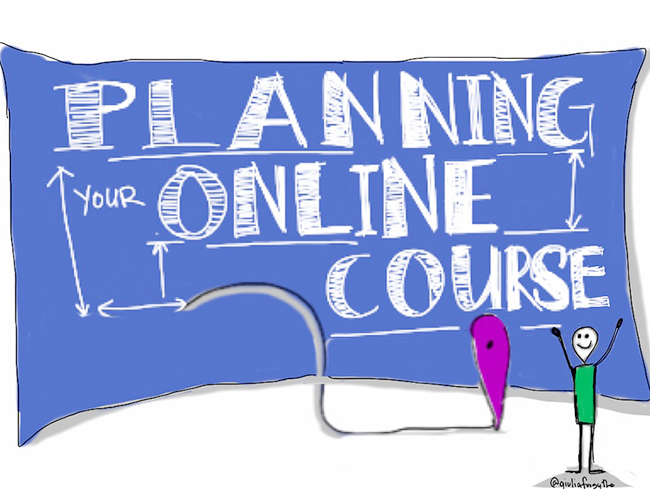Universities across the UK have transformed all courses online and it seems it will continue for a certain time in the new academic year. Will online learning be our new future?

Wearing a comfortable T-shirt, Rhiana looks at her computer. The lecturer is sharing his screen to all students. Rhiana turns off the video, stands up and goes to the kitchen. Grabbing herself a cup of coffee, she comes back and opens the video again, while part of the lecture has been missed.
“The fact that we were sitting in the comfort of our homes, it’s a good thing,” said Rhiana George, a 22-year-old international student from Dubai in Cardiff University. “But you are really comfortable at home that you don’t really feel like listening to your online lectures as much.”
Having attended the online courses provided by university for five weeks, Rhiana said: “(At first), I felt really sad that it was online because of the fact that I wouldn’t see my friends. I’ve made really a good bunch of friends in the course.
“The lecturers did their best to provide the best education online for us. They are always there when we want them. But that physical interaction was missing.”

Universities across the UK have transformed most courses online since the end of March, due to the coronavirus pandemic. The Prime Minister announced that schools could open gradually from June. But the opening time for universities is still uncertain.
In mid April, Aberdeen University said they would defer the new term for two weeks, and lecturers were told to prepare online courses as well in case students couldn’t go to the university in person. On 11 May, The University of Manchester confirmed that they would continue online courses for at least one semester for the new academic year.
“People sometimes think online learning or distant learning is quite new, but it’s actually quite old,” said Neil Mosley, digital learning designer of Cardiff University.
Before the coronavirus, online education was a good way to learn flexibly, according to Neil, universities could provide courses to people that they might have not targeted before, such as people who were working. Then, they could learn flexibly alongside their responsibilities through online courses.
While after the lockdown, everyone has to learn remotely. It raises the question whether the online learning is going to be used more broadly, and it also causes big challenges for both teachers and students, added Neil.

For teachers, the way of teaching in universities has stayed the same for a long time and there’s a very set model for teaching in universities face to face. However, “online education is completely different to that, and it’s quite difficult to make that shift,” said Neil, so teachers need to think about many things that they might not have thought about before.
For example, when students learn on campus, they have libraries, student support services, timetables and a lot of different aspects in place that support them and guide them, while for online education, teachers need to think about those things built up around students’ experience rather than just about the teaching.
Teachers might give lectures once a week and they might have office hours. But now they need to think about questions as: “How do we use videos for education? How do we communicate with students if we can’t see them? We have to use text to communicate more often and how do we best approach that? How regularly do we communicate with students?” added Neil.
Students also face huge challenges. Without other classmates around, they need a bigger self motivation. “When you are online, you don’t have a timetable in the same way. So you have to be a bit more structured, and self-motivated and manage your time so that you keep on track,” said Neil.
“And you engage with everything differently. You don’t have your classmates there. You lose a lot of structure that come with face to face education.”
Another challenge for students is the digital fluency, which is the confidence and fluency that people have to use the technology for learning and for engaging with people.

“The very best online education experience will have students-teacher interaction and student-student interaction,” said Neil. “If you have not met those people, it can be difficult, making you reluctant to engage with people. But actually it is very important for the experience that you do engage with people. That can be a big barrier to cross.”
Neil gives several tips for students to learn online courses more effectively:
- Engage with your fellow students and teachers. A lot of online education has things like discussion forums, and it’s really important that students can engage, are present online, and communicate with other people.
- Plan your time. If it is not clear to you, find out what you need to do each week and plan your time out, so you can do your tasks.
- Develop good strategies for online learning. For example, there are many videos in online learning. A good way of learning from videos is to listen to a little bit, pause it, write down the things that have being covered, and move on and repeat it.
- Make sure you have a good and quiet space to study if it is possible. Having a good set up can be helpful.
Neil believes anyone can benefit from online courses, although they probably have some restrictions in terms of the physical aspect or hands-on skills based teaching, but “A well-designed online course is equivalent to face to face education,” said Neil.
Flora Ashcroft, a 22-year-old student from Leeds Arts University, is one of those people, who benefit a lot from online courses.
After graduation from secondary school, Flora went to a six-form college. Wanting to have a career in animation industry as either a character designer or a comic artist, Flora found the things she got from school were not enough, because “they weren’t teaching foundations of art.”
Wanting her drawing skills to be really solid, Flora started seeking for online learning resources. She joined a 10-week online course with the industry professionals teaching foundations. Flora said, they were really basic stuff, which were very important and helpful.
Apart from online courses, Flora also found teaching materials on Youtube and Instagram, where many artists would share how they do stuff. “You can see whether they are good,” said Flora. “In traditional teaching, you can be taught by anyone. But when it’s online, you can choose whom to teach you.”
Flora currently studies Visual Communication in the university, and she still keeps learning drawing with different online courses.
“Learning something new and being in control of what you learn when you learn it,” according to Flora, is her biggest joy during this process. “You feel a bit better about yourself, because you’ve done it. No one else is forcing you to do it. There’s no credit going to anyone else, except for yourself.”

In terms of difficulties, Flora said, when learning online, she couldn’t get much feedback from teachers or peers compared with the traditional education. “If you are doing it by yourself, you’re kind of just doing the wrong thing over and over again until you notice it.” Therefore, Flora thinks joining some artist groups or forums to communicate with others are very important.
Neil said: “(Students) come to universities, not just for the teaching and learning, but for other aspects, such as university life and the experience.” He believes universities may start to do more online education as a result of the pandemic, but online courses are not going to replace on-campus teaching.
Rhiana said, for students, their participating level was reduced because of the lack of the physical interaction in online courses. But she found the break-up session on Zoom was a cool feature, because it gave her a feeling of getting into groups in class.
“The concentration is a challenge that us students have to somehow overcome and get a schedule into our everyday life. The interactive elements within the course is something that the lecturers have to work on to make it more exciting for the students online if that’s going to be the future of learning,” said Rhiana.

Flora’s drawing in 2013 
Flora’s drawing in 2013 
Flora’s drawing in 2013 
Flora’s drawing in 2020 
Flora’s drawing in 2020 
Flora’s drawing in 2020
